With the upgrade waterfront area at Punggol beach, it has attracted many families and cyclist to this small stretched. Despite the numerous human activities going on here, the marine life at Punggol beach is as many as the beach visitors. Often, most of them goes unnoticed and unappreciated by humans.
 |
| Punggol Beach and Jetty |
Even on a not so low tide, a vast patch of rocky area to the right of the jetty is exposed for families to bring their children down to search and explore the place for marine life.
Very well hidden in tiny pool, if not noticed carefully, are tiny anemones. The colours of the tiny anemones are very close to the sandy substrate it is on. These are probably the
banded bead anemones (
Anthopleura sp.)
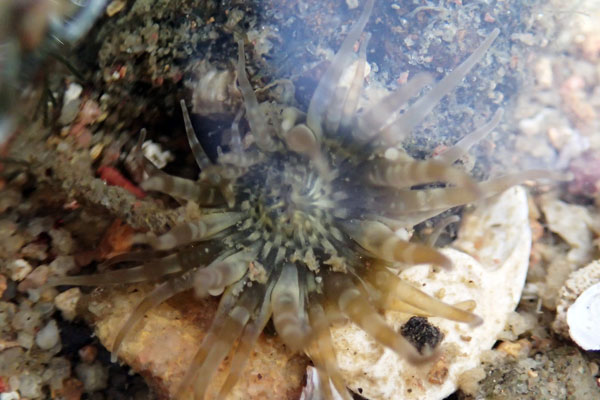 |
| Banded bead anemone |
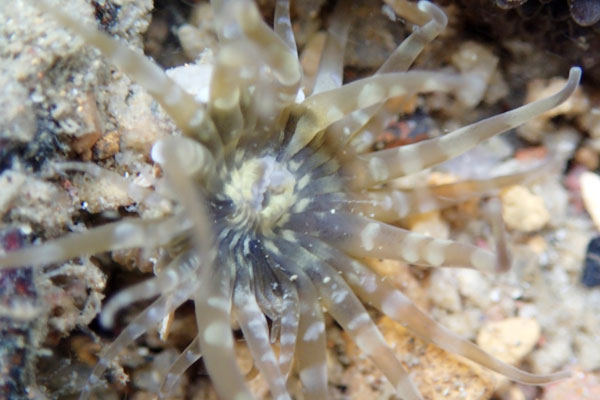 |
| Banded bead anemone |
Suspicious jerking snail shells suggest a hermit crab in it and it was noticed to be foraging for food. On the shore of Punggol beach, the
banded hermit crab seems to be the dominate ones. Hermit crabs are to look at and may be pretty for children to keep them as pets. However wild animals dies quickly in captivity. It is good enough to observe these cute animals in the wild and leave them where they belong to.
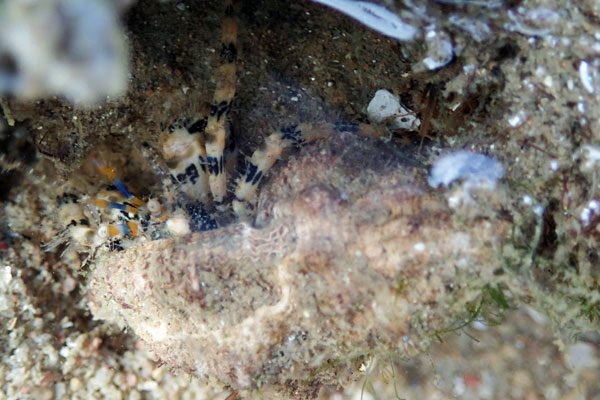 |
| Foraging banded hermit crab |
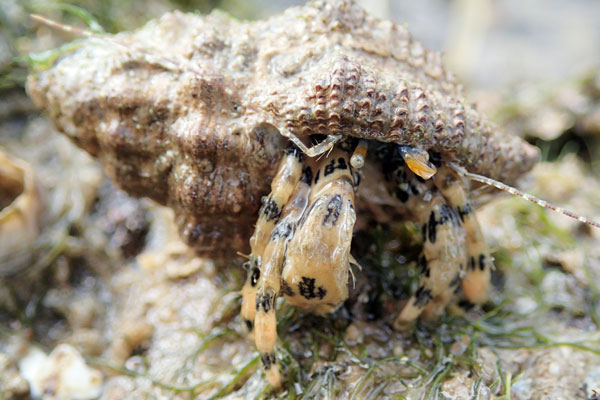 |
| Frontal view of the hermit crab. |
Spreading all over the rocky areas and the jetty pillars, the bunches of glassy looking strands are actually the
glassy branching bryozoans. Unfortunatly, I am not able to provide an exact common name for the orange sponge.
 |
| Orange sponge, some covered by bryozoans. |
During last year's comprehensive marine biodiversity survey, a sea slug was found on these bryozoans. On this trip, many of the sea slug was seen. The
Okenia pellucida is the species of sea slug found on the bryozoan.
 |
| Okenia pellucida, on bryozoan |
Very well hidden are the brittle stars, which are hardly seen in the day as they are very shy animals.
 |
| Brittle star |
Crawling around on the encrusted rocks are tiny crabs of various species, some of which scurry into hiding when sensing motion nearby. Of the crabs I managed to observe was this. I didn't manage to get a clear shot of the dorsal view
 |
| Underside of the crab |
Other crabs seen on this trip:
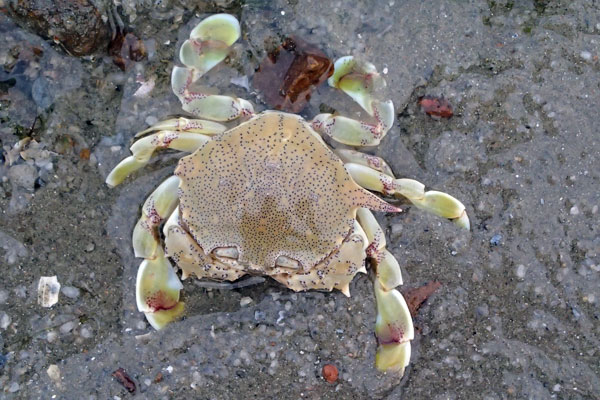 |
| Moon crab |
The team also found another type of sea slug -
Beaded nudibranch (
Hoplodoris nodulosa).
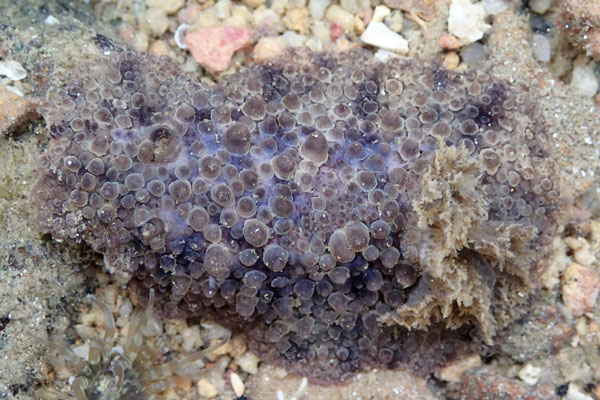 |
| Beaded nudibranch (Hoplodoris nodulosa) |
 |
| Rhinophores |
 |
| Feathery gills |
I also saw two types of bristle worms on the shore, one of which could be a fireworm. Bristleworms are difficult to identify to species level without a close look at the head.
 |
| Bristleworm |
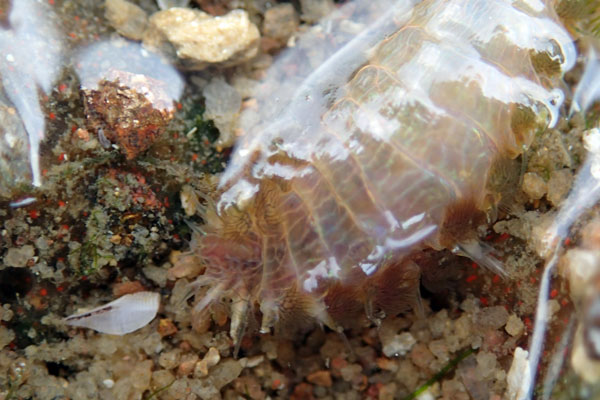 |
| Fireworm |
At the edge of the rocky patch on the shore, I noticed a patch of seagrass. However the tides was not low enough for me to take a closer look at them. Towards the end of the trip, I found a stand of broken seagrass caught on a washed up branch. It looks similar to a
spoon seagrass (
Halophila ovalis), but it has longer leaf blades. Could it be the
hairy spoon seagrass (
Halophila decipiens)?
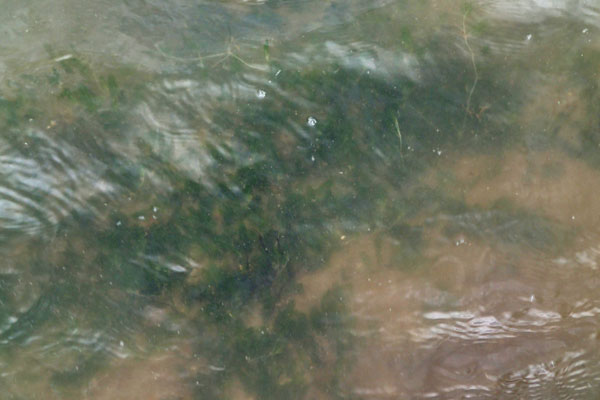 |
| Patch of seagrass |
 |
| The seagrass I found caught on a branch. |
During the trip, I saw a young boy walking towards the water and later he was seen to be pulling the ropes attached to the fish trap. It turn out, there were actually two fish traps placed. Shortly after, he was joined by an adult, who seems to be his father. They checked the fish traps, probably removing the catch, threw the traps back into the water and left.
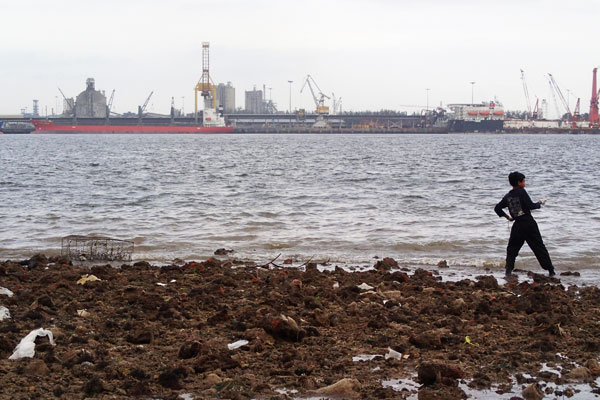 |
| Boy pulling the rope. |
 |
| Examining the fish trap. |
The marine life at Punggol beach is what I would consider, a hidden world, with all the human activities going on. Life during the day may be less exciting as compared to night, but it is still as interesting.





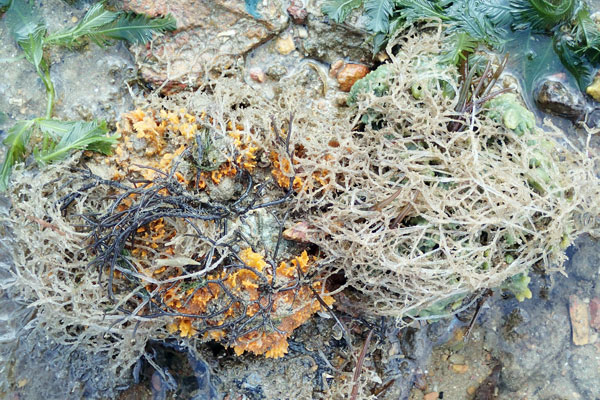














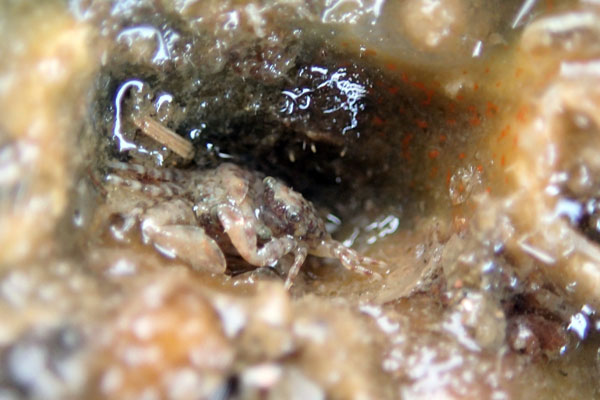


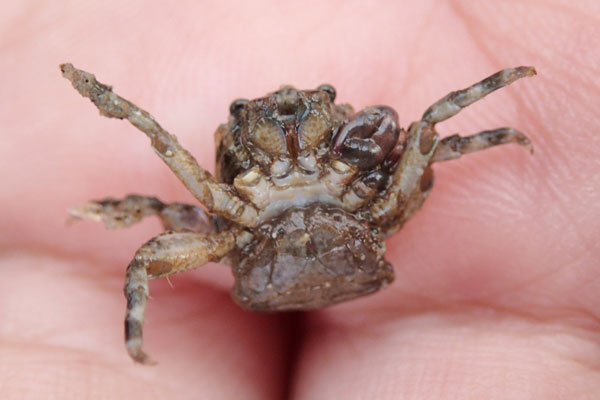


No comments:
Post a Comment